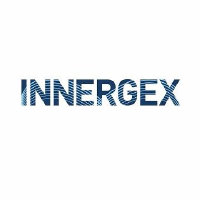
JSL SA
BOVESPA:JSLG3


| US |

|
Johnson & Johnson
NYSE:JNJ
|
Pharmaceuticals
|
| US |

|
Berkshire Hathaway Inc
NYSE:BRK.A
|
Financial Services
|
| US |

|
Bank of America Corp
NYSE:BAC
|
Banking
|
| US |

|
Mastercard Inc
NYSE:MA
|
Technology
|
| US |

|
UnitedHealth Group Inc
NYSE:UNH
|
Health Care
|
| US |

|
Exxon Mobil Corp
NYSE:XOM
|
Energy
|
| US |

|
Pfizer Inc
NYSE:PFE
|
Pharmaceuticals
|
| US |

|
Palantir Technologies Inc
NYSE:PLTR
|
Technology
|
| US |

|
Nike Inc
NYSE:NKE
|
Textiles, Apparel & Luxury Goods
|
| US |

|
Visa Inc
NYSE:V
|
Technology
|
| CN |

|
Alibaba Group Holding Ltd
NYSE:BABA
|
Retail
|
| US |

|
JPMorgan Chase & Co
NYSE:JPM
|
Banking
|
| US |

|
Coca-Cola Co
NYSE:KO
|
Beverages
|
| US |

|
Walmart Inc
NYSE:WMT
|
Retail
|
| US |

|
Verizon Communications Inc
NYSE:VZ
|
Telecommunication
|
| US |

|
Chevron Corp
NYSE:CVX
|
Energy
|
Utilize notes to systematically review your investment decisions. By reflecting on past outcomes, you can discern effective strategies and identify those that underperformed. This continuous feedback loop enables you to adapt and refine your approach, optimizing for future success.
Each note serves as a learning point, offering insights into your decision-making processes. Over time, you'll accumulate a personalized database of knowledge, enhancing your ability to make informed decisions quickly and effectively.
With a comprehensive record of your investment history at your fingertips, you can compare current opportunities against past experiences. This not only bolsters your confidence but also ensures that each decision is grounded in a well-documented rationale.
Do you really want to delete this note?
This action cannot be undone.

| 52 Week Range |
5.05
7.95
|
| Price Target |
|
We'll email you a reminder when the closing price reaches BRL.
Choose the stock you wish to monitor with a price alert.

|
Johnson & Johnson
NYSE:JNJ
|
US |

|
Berkshire Hathaway Inc
NYSE:BRK.A
|
US |

|
Bank of America Corp
NYSE:BAC
|
US |

|
Mastercard Inc
NYSE:MA
|
US |

|
UnitedHealth Group Inc
NYSE:UNH
|
US |

|
Exxon Mobil Corp
NYSE:XOM
|
US |

|
Pfizer Inc
NYSE:PFE
|
US |

|
Palantir Technologies Inc
NYSE:PLTR
|
US |

|
Nike Inc
NYSE:NKE
|
US |

|
Visa Inc
NYSE:V
|
US |

|
Alibaba Group Holding Ltd
NYSE:BABA
|
CN |

|
JPMorgan Chase & Co
NYSE:JPM
|
US |

|
Coca-Cola Co
NYSE:KO
|
US |

|
Walmart Inc
NYSE:WMT
|
US |

|
Verizon Communications Inc
NYSE:VZ
|
US |

|
Chevron Corp
NYSE:CVX
|
US |
This alert will be permanently deleted.
JSL SA
JSL SA engages in the provision of logistics solutions and services. The company is headquartered in Sao Paulo, Sao Paulo and currently employs 28,000 full-time employees. The company went IPO on 2010-04-22. The firm provides services through six business lines: Road Cargo Transportation and Dedicated Road Cargo Logistics, involved in the supply chain and management of the information of the logistics chain of the customer; Commodity Logistics, which offers customized solutions for the paper and cellulose, mining and sugar-energy sectors; Internal Logistics, that consist on the internal handling of raw materials, products, inventory management and assembly line supply of the customer; Urban Distribution, which includes supply of points of sale and management of the return of packaging; Warehousing Services, dedicated to the reception, storage and dispatch of goods and inventory management; and Chartering, which provides transportation services for employees of companies that are customers through the other services provided by the Company. The Firm is controlled by Simpar SA.

JSL SA engages in the provision of logistics solutions and services. The company is headquartered in Sao Paulo, Sao Paulo and currently employs 28,000 full-time employees. The company went IPO on 2010-04-22. The firm provides services through six business lines: Road Cargo Transportation and Dedicated Road Cargo Logistics, involved in the supply chain and management of the information of the logistics chain of the customer; Commodity Logistics, which offers customized solutions for the paper and cellulose, mining and sugar-energy sectors; Internal Logistics, that consist on the internal handling of raw materials, products, inventory management and assembly line supply of the customer; Urban Distribution, which includes supply of points of sale and management of the return of packaging; Warehousing Services, dedicated to the reception, storage and dispatch of goods and inventory management; and Chartering, which provides transportation services for employees of companies that are customers through the other services provided by the Company. The Firm is controlled by Simpar SA.
Revenue Growth: JSL reported gross revenue of BRL 2.9 billion for Q3 2025, up 5% year-on-year, or 10% excluding the restructuring IC business.
Profitability: EBITDA reached BRL 526 million, up 12.8% year-on-year with a margin improvement to 21.2%. Net profit was BRL 36 million, steady compared to last quarter.
Business Reorganization: The company launched three distinct business units—Dedicated Services, Intralog, and Digital—to drive growth and operational efficiency.
Deleveraging: Net debt fell to BRL 5.7 billion with leverage dropping to 3x from 3.2x last quarter. Cash generation remains strong.
Contract Wins: New contracts signed in Q3 totaled BRL 854 million, pushing the year-to-date value to BRL 4.15 billion.
Leadership Transition: CEO Ramon Alcaraz is stepping down, with CFO Guilherme Sampaio assuming the CEO role, and a new CFO to be announced soon.
Stable Outlook: Management expects continued organic growth, stable or growing margins, and CapEx in line with 2025 levels.



































